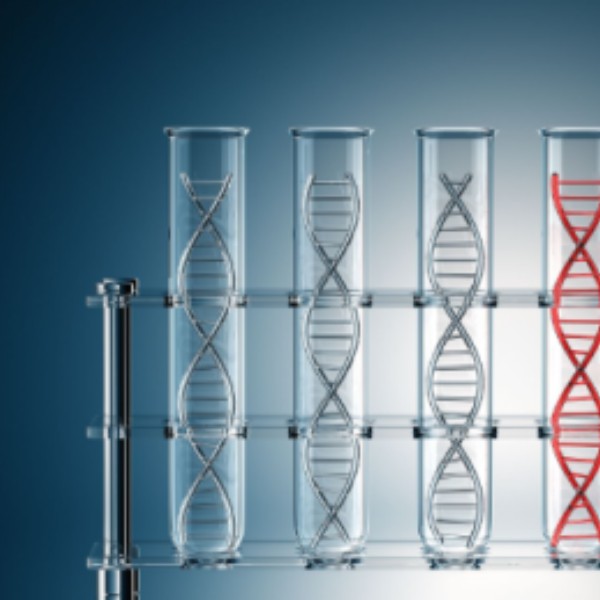Introduction and comparison of DNA extraction methods
In nature, whether it is plants, animals or viruses, DNA, as the genetic material of most organisms, plays an irreplaceable role in heredity. In order to study the genes of organisms, it is necessary to extract DNA from cells. There are many methods for this process. It can be realized. At present, the phenol-chloroform extraction method, spin column method and magnetic bead method are commonly used to extract DNA. Below we will introduce each of these three methods of DNA extraction.
1. Phenol chloroform extraction method
Phenol chloroform is used to extract DNA by using phenol as a denaturant of protein, repeated extraction to denature the protein, SDS (sodium dodecyl sulfonate) to lyse the cell membrane, and digest proteins or polypeptides or small peptides in the presence of proteinase K and EDTA. Molecules that degrade nucleoproteins by denaturation, freeing DNA from nucleoproteins. DNA is soluble in water but insoluble in organic solvents. The surface of the protein molecule has a hydrophilic group, which is also easy to perform hydration, and forms a hydration layer on the surface so that the protein molecule can smoothly enter the aqueous solution to form a stable colloidal solution. In the presence of organic solutions, this colloidal stability of proteins is disrupted, and denaturation precipitates. After centrifugation, the organic solvent is in the bottom (organic phase) of the test tube, the DNA is present in the upper aqueous phase, and the protein is precipitated between the two phases. Using the extraction principle, according to the protein-nucleic acid is dissolved in different reagent layers, the pipette tip is inserted into different liquid layers to extract the required components, and purified nucleic acid is obtained after multiple items of washing.
Disadvantages of Phenol Chloroform Extraction
The disadvantage of this method is that due to the use of phenol, chloroform and other reagents, the toxicity is high, the long-term operation has a great impact on personnel health, and the recovery rate of nucleic acid is low, and the loss is large. Due to the large operating system, and different experimental personnel, The repeatability of the operation is poor, which is not conducive to the protection of RNA, and it is difficult to perform micro-quantification operations. The advantage is that the common reagents and medicines in the laboratory are used, and the cost is relatively low.

2. Spin column method
The main principle of the spin column method is to fix the functional groups that can adsorb nucleic acid on the spin column mold. By adding different lysis reagents, washing reagents, and repeated centrifugation, the purpose of separating nucleic acid and impurities is achieved, and purified nucleic acid is obtained. The advantage of spin column DNA extraction is that it has higher purity than the traditional phenol chloride method, which is conducive to RNA protection and can perform micro-operations. With its low price and relatively convenient operation, it gradually replaces the traditional DNA extraction method. , is generally accepted by the market such as university research institutes.
Disadvantages of spin-column DNA extraction
The disadvantage of DNA extraction by spin column method is that it requires more samples and consumables, and is powerless for rare samples, especially in the fields of forensics and archaeology. At the same time, DNA extraction by spin column method requires repeated centrifugation, which is inconvenient for high-throughput and automated operations and is incompatible with the high-throughput and automation requirements of modern biological experiments, especially in the fields of gene diagnosis, disease detection, and transgenic detection. DNA extraction requires a large number of operators and equipment.
3. Magnetic bead method
The principle of the magnetic bead method is that the surface of the magnetic beads is modified with specific active functional groups that can adsorb nucleic acids, and the washing solutions of different lysis solutions and binding solutions can be specifically combined with the target substances under specific conditions. The magnetic properties of the beads themselves can easily achieve directional movement and enrichment under the action of an external magnetic field, so as to achieve the purpose of separating nucleic acids from impurities, thereby realizing the separation and purification of target substances and obtaining purified nucleic acids.
Magnetic bead method is a perfect combination of nanotechnology and biotechnology, which has incomparable advantages over other DNA extraction methods.
Professional manufacturer of Nucleic Acid (DNA & RNA) Extraction and Analysis products Magnetic Beads supplier
GENETURE is a group company,we own two factories: Ascend and Dianrun,to provide one stop solution of Nucleic Acid Extraction and Analysis,including solution for COVID-19. Geneture provides high quality and professional Nucleic Acid Extraction Reagents, Lab consumables, Real-time PCR consumables and test machines.
GENETURE main products including: Nucleic acid extraction or purification kit,Automatic nucleic acid extractor, PCR system, PCR kit, Magnetic beads, and lab consumables of 96 well deep plate,Magnetic rod comb,PCR tube,PCR plate,Pipette tips,centrifuge tubes.
Geneture provides one stop solution of Nucleic Acid Extraction and Analysis, including several kinds of Magnetic Beads. Feel free to contact us.
Email: info@geneture.com
Mobile: +86 150 1002 8687
